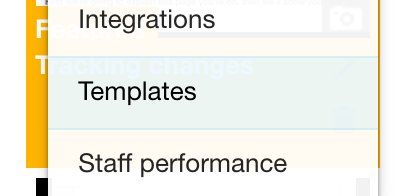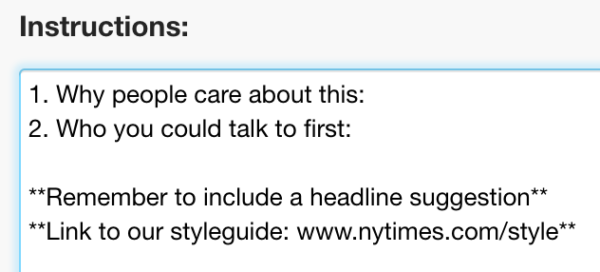
Until last week, the average among college organizations for setting assignment instructions was 53% of all new work, which meant roughly one in every two assignments was being set without any instructions whatsoever. We kept hearing from editors and newsroom managers across the country who felt that Camayak could help improve that.
“When you show up at a campus newsroom for the first time it can be a a confusing experience” one editor told us. “You got good grades in English at school and maybe even worked on your high school newspaper, but your style needs to change now that you’re talking to a college audience and you may need some more guidance around how to write a compelling headline”. But where do new writers get that from? Their assigning editor is often new to the job themselves and has only been giving out assignments for a week. Perhaps she hasn’t even had time to sit down with you to discuss what her expectations are, yet.
Camayak now offers busy newsrooms a way to standardize their basic expectations of both staff contributors and freelancers pitching speculative ideas to their editors. By creating templates for specific types of assignments and desirable pitches, newsrooms stand to share more of their institutional acumen with more of their staff, more consistently.
Some college newsrooms are already more consistent than others at setting specific instructions for their contributors to follow. ECC Union, El Camino College’s student media organization, sets clear instructions for four out of every five of its assignments while Algonquin College in Ottawa, Canada, chooses not to set assignment instructions for a small portion (10%) of its work. Among professional newsrooms that use Camayak, the innovation insights agency PSFK.com and travel broker Skyscanner set instructions for an average of 98% and 100% of their assignments respectively.
